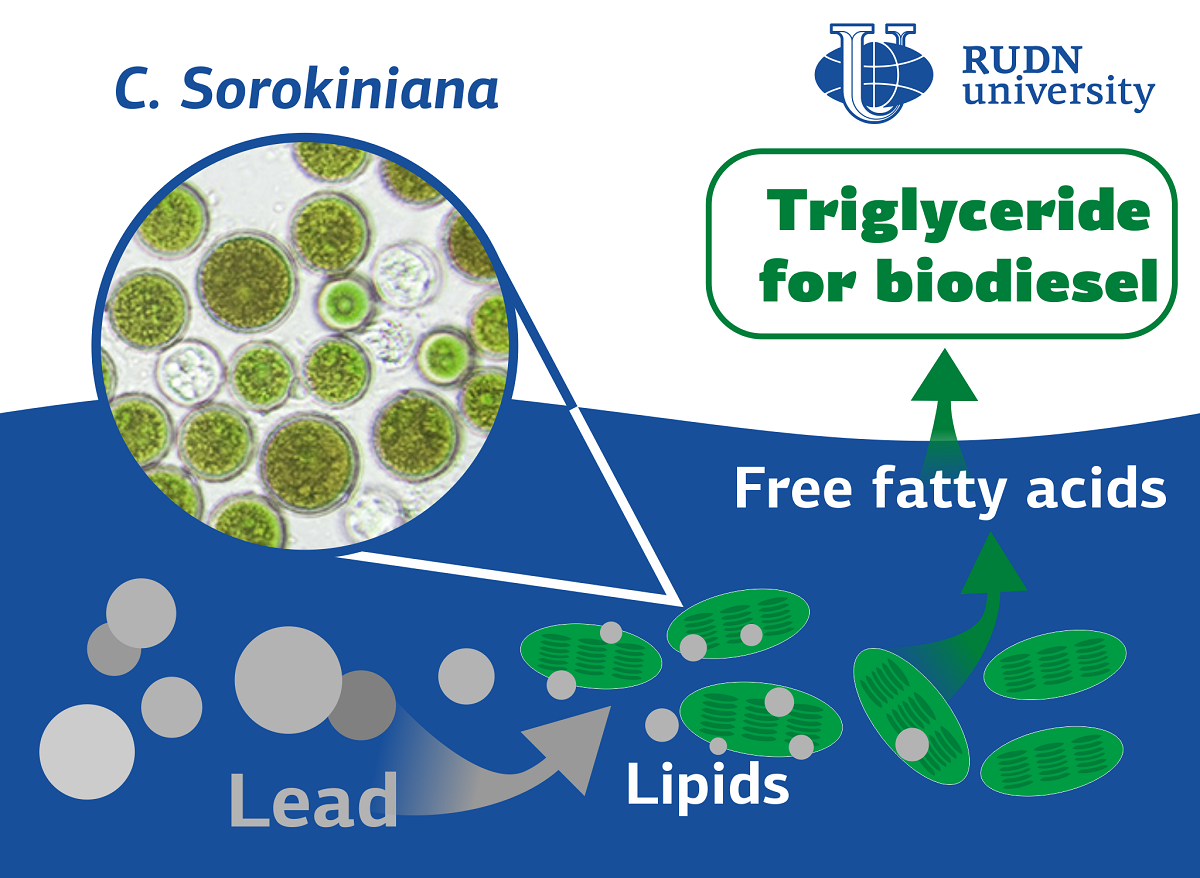RUDN University Chemist: Algae Can Both Purify Lead-contaminated Water and Create Biofuel

“To manage and survive under metal-induced stress, many microalgae have evolved different mechanisms that include lipid accumulation as a defense mechanism against toxic heavy metals. Chlorella sp. to be more tolerant of lead compared to other species of microalgae. This may be due to their smaller size and larger cell wall surface area. We studied the short and long-term effects of Pb on microalgae and the optimization of the Pb concentration that promotes maximum lipid accumulation and lead tolerance in Chlorella sorokiniana”, said Vinod Kumar, RUDN University professor.
Chemists put C. Sorokiniana in fresh water with different concentrations of lead chloride and lead oxide (50 to 600 mg per liter). C. Sorokiniana was also cultivated in fresh water containing algae growth media used as a control sample. To evaluate the short-term effect of lead contamination, chemists tested the samples after 96 hours. The long-term effect was evaluated 14 days after the start of the experiment. Scientists harvested microalgae using a centrifuge and then dried biomass was treated with chloroform/methanol to extract lipids. Lipids were converted into biodiesel with methanolic H2SO4 and analyzed by gaschromatography-mass spectroscopy.
After 96 hours, 50% of the algae did not survive in a solution with 565 mg/l of lead chloride and 191 mg/l of lead oxide. Chemists called these values the maximum level of lead contamination that C. Sorokiniana can withstand. At the same time, in a lead-contaminated environment, algae accumulate almost twice as many lipids—97 mg per liter per day compared to 58 mg in a clean environment. Lead also changes the composition of lipids—in a polluted environment, microalgae accumulate more saturated fatty acids (SAFA) and monounsaturated fatty acids (MUFA). This improves the properties of C. Sorokiniana as a raw material for biofuels.
“The results of this study conclude that C. sorokiniana has a strong tolerance to Pb and therefore may serve as a potential candidate for the bioremediation of wastewater. This finding also revealed elevated lipid levels in microalgae cells, indicating their role as a biofuel feedstock for biodiesel development. The lipid profile indicated altered lipid profiles under Pb stress and elevated levels of SAFA and MUFA. Thus, it can serve the dual purpose of bioremediation and bioenergy”, said Vinod Kumar, RUDN University professor.
The results are published in the journal Environmental Technology & Innovation.
The project to develop a cellular model of the placenta became the winner in the Scientific Materials category of the Young Scientists 3.0 competition, organized with the support of the Presidential Grants Foundation and T-Bank.
Ten scientific journals published by RUDN University have been included in the highest level of the state list of scientific publications, the White List.
Forests are not only the lungs of the planet, but also home to millions of species. However, it has remained unclear how underground interactions between trees and fungi affect forest species richness in different climatic conditions. Previous studies have yielded conflicting results: in some regions, the dominance of certain fungi reduced tree diversity, while in others it increased it.
The project to develop a cellular model of the placenta became the winner in the Scientific Materials category of the Young Scientists 3.0 competition, organized with the support of the Presidential Grants Foundation and T-Bank.
Ten scientific journals published by RUDN University have been included in the highest level of the state list of scientific publications, the White List.
Forests are not only the lungs of the planet, but also home to millions of species. However, it has remained unclear how underground interactions between trees and fungi affect forest species richness in different climatic conditions. Previous studies have yielded conflicting results: in some regions, the dominance of certain fungi reduced tree diversity, while in others it increased it.